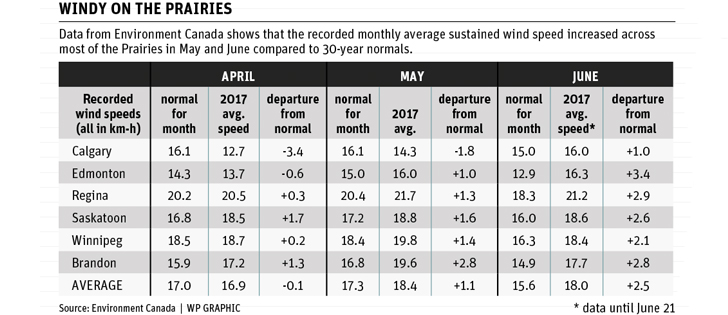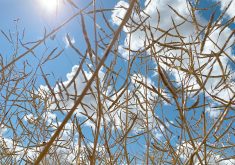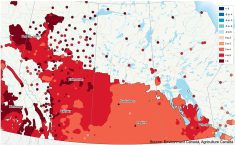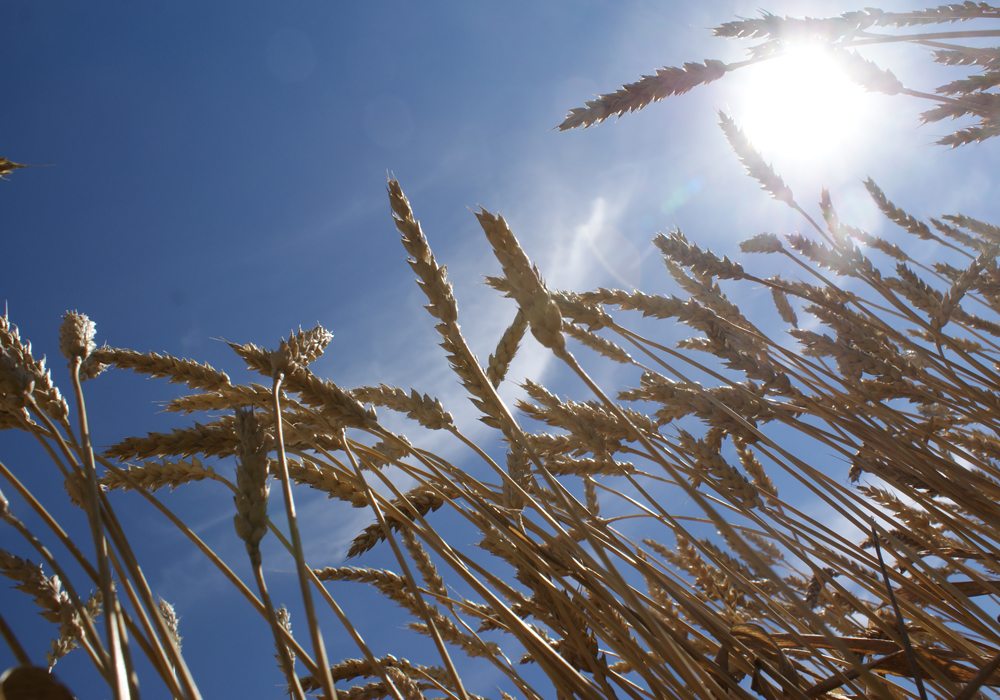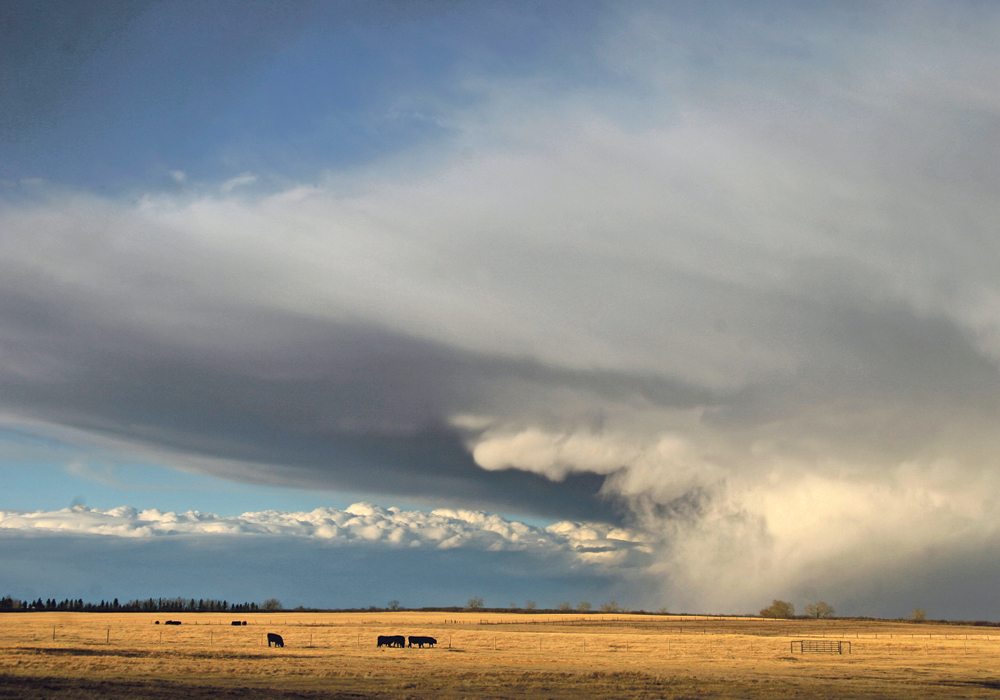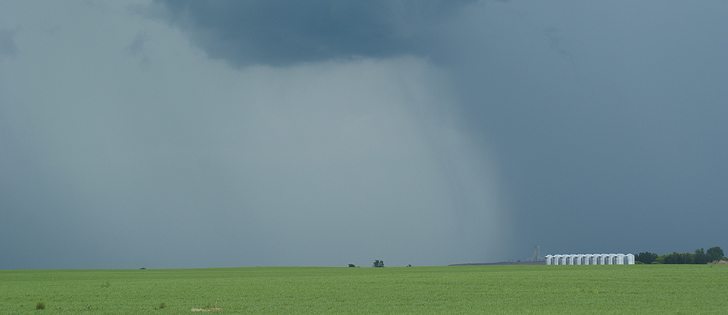Unusually strong and persistent winds are wreaking havoc on farms across the Prairies this growing season.
Last week a line of strong thunderstorms that formed in the northern foothills of Alberta swept across the southern part of the province and into Saskatchewan, leaving behind a trail of demolition.
Wind gusts were recorded as high as 124 km-h in Maskwacis, Alta.
Nikki Szakaly, an adviser with Agri-Trend, said it went from being a calm day in Red Deer to gusts of 111 km-h in short order.
Read Also

New coal mine proposal met with old concerns
A smaller version of the previously rejected Grassy Mountain coal mine project in Crowsnest Pass is back on the table, and the Livingstone Landowners Group continues to voice concerns about the environmental risks.
“It kind of comes out of nowhere. You don’t expect it and all of the sudden you’re trying to move equipment and make sure animals are in the right place,” she said.
The storm knocked down trees, destroyed fences and blew shingles off homes and outbuildings.
“We had one neighbour who actually lost three-quarters of a roof off his main machine shed,” said Szakaly.
The roof catapulted across the farmyard and into a main power line.
“That took out the power for everybody for almost two days in the area,” she said.
The winds whipped wheat and barley crops around with winter wheat suffering the most damage. Canola stems were snapped off and plant populations were thinned.
It was the second nasty storm to hit Red Deer this growing season. Crops were stressed and sedate for about a week following the first storm.
“They kind of go into stress mode and don’t want to do a whole lot of growing,” said Szakaly.
The June 20 storm was an extreme case but in general it has been a blustery spring.
An analysis of Environment Canada weather data from six major centres across the Prairies shows that hourly average sustained wind speeds were one km-h higher than the 30-year average in May and 2.5 km-h higher than normal during the first 21 days of June.
“That doesn’t sound like a lot but when you’re talking about average wind speed, a difference of (2.5) km-h is quite a bit,” said Environment Canada meteorologist John Paul Cragg.
“It has been a windier June than average for sure so far across the Prairies.”
Shannon Friesen, acting cropping management specialist with Saskatchewan Agriculture, said there is no doubt that the howling wind is resulting in significant crop damage.
“It has whipped them around. It has created dirt and dust storms that have actually blown topsoil over the fields and into ditches. It has broken leaves and stems and it has also dried up the topsoil,” she said.
The wind has also delayed herbicide and fungicide application on many farms.
Gusts of 40 to 80 km-h have been common. It has even been windy early in the morning and late in the evening.
Pam de Rocquigny, general manager of Manitoba’s wheat, barley and corn associations, said the winds have damaged some canola fields, but wheat and barley seem to have fared better.
“With some of the strong winds, we’ve seen what’s called floppy corn syndrome, where the plants are kind of leaning over because it doesn’t have a good rooting system,” she said.
De Rocquigny doesn’t think the damage is widespread or that much more pronounced than previous years.
That is certainly not the case in places like Red Deer. Richard Glass, turf manager with Deermart Equipment Sales, said the June 20 storm caused plenty of structural destruction on farms in the Red Deer area.
“I talked to a farmer today and he’s been trying to update his feedlot paneling, but he lost half of his fencing last night,” he said.
Another producer was busy reroofing his calf shelter because the old roof ended up 350 metres away.
In some cases the damage appeared to be random.
“I had one guy that said he had 10 bins in a row and the middle one went and it had been there 30 years,” said Glass.
Szakaly is worried that the windy trend will continue all summer and into harvest season, when the winds can cause massive damage.
A September 2012 plow wind caused millions of dollars of damage to crops in Alberta and Saskatchewan, tossing canola swaths around, snapping off wheat and barley heads and causing lodging and pod shattering.
“With the way the weather has gone, it could be a bit of a wild summer,” she said.
Cragg said you can’t use the past to predict the future when it comes to wind. He said the breezy spring can be blamed on lots of low pressure systems lurking over the Prairies, but that doesn’t mean they will stick around.
“These patterns can switch up. They’re very hard to predict,” he said.




